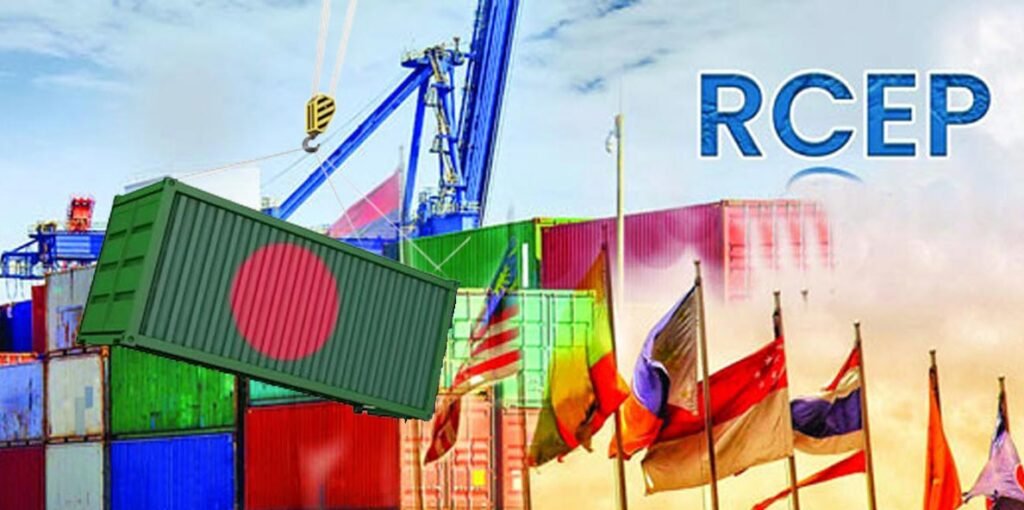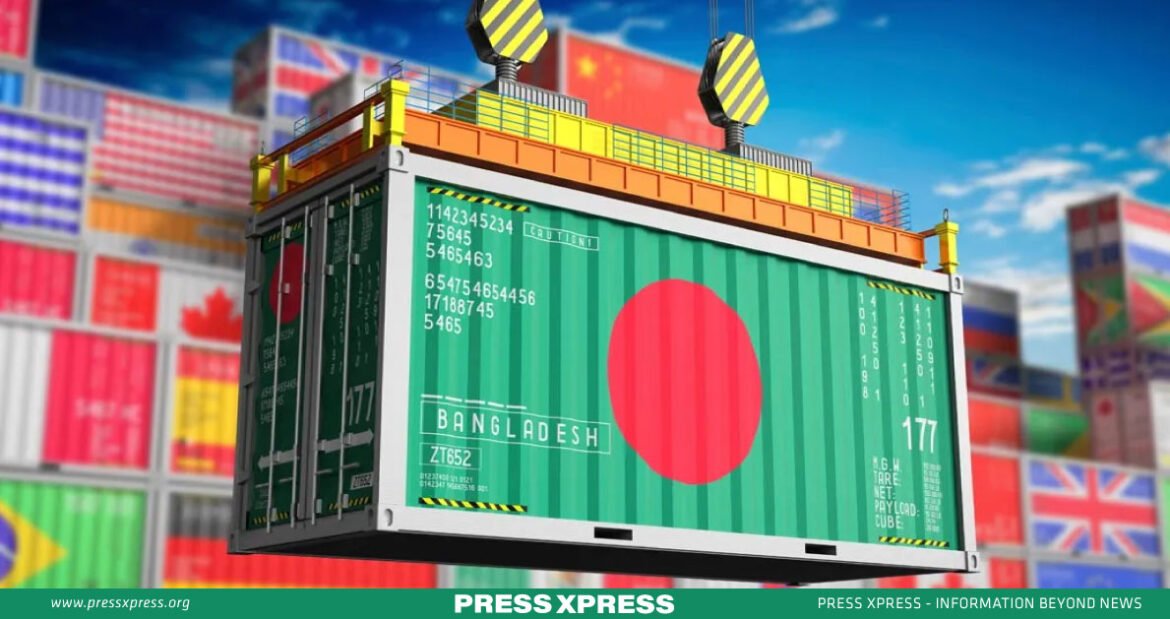Bangladesh is on track to move up from the Least Developed Countries (LDC) category in 2026. This significant progress has been aided by international support measures like preferential market access and special treatment for LDCs by the World Trade Organisation (WTO).
WTO estimates show that 71% of Bangladesh’s global exports have benefited from Duty-Free Quota-Free (DFQF) market access for LDCs. Bangladesh also exports to India and other regional group members using the preferences these countries give to LDCs.
You Can Also Read: The Puzzle of Low Taxation in Bangladesh: Insights and Solutions
However, these benefits will cease in 2026, impacting competitiveness, although the EU’s Everything But Arms (EBA) initiative will provide DFQF market access until 2029. To counteract potential losses, Bangladesh is engaging in initiatives like requesting WTO extension of DFQF market access, participating in the EU’s Generalized Scheme of Preferences (GSP) review, and exploring free trade agreements feasibility.
Bangladesh Eyes FTAs with Seven Countries, Two Blocs
The government is contemplating the establishment of an FTA with seven nations and two regional blocs. This is to maintain duty-free market access for Bangladeshi goods following its transition from a least developed country to a developing one in 2026. The action plan identifies potential FTA partners for Bangladesh, including China, India, Japan, Korea, Singapore, Canada, and Malaysia.
Additionally, the government is exploring the possibility of joining the Eurasian Customs Union and the Regional Comprehensive Economic Partnership, which is a free trade agreement among Asia-Pacific nations. To preserve its current preferential market access, Bangladesh will need to establish FTAs and Preferential Trade Agreements (PTA) with its key trading partners, as it will no longer enjoy duty-free benefits after graduating from the LDC status.
As per the proposed action plan, the government has already initiated discussions with Japan and Korea regarding the signing of an FTA. The action plan also highlights that the major challenges for Bangladesh in maintaining its existing market access in the EU would be the implementation of Article 29 of the revised GSP regulation, the ratification and execution of 32 international conventions, and compliance with the rules of origin criteria.

Key Areas to Focus
Bangladesh primarily relies on apparel, constituting over 80% of its total exports, with the majority directed to developed nations, which represent about 70% of global imports. Should Bangladesh enter into Free Trade Agreements (FTAs) with developed countries, it stands to maintain these markets, as most grant DFQF access to Bangladeshi apparel as it’s categorized as a Least Developed Country (LDC).
Export gains from agreements with similar economic standing countries are limited due to narrow export portfolios. Evaluating FTA effects on developing countries would likely reveal minimal export advantages.
While the average customs duty in Bangladesh is around 15%, the average border tariff doubles if regulatory and supplementary duties are added. FTAs require the elimination of all border taxes imposed solely on imports. Therefore, Bangladesh must eliminate customs duties along with supplementary and regulatory duties.
Eliminating border taxes solely for FTA partners causes significant trade diversion, harming consumer welfare. If Bangladesh joins FTAs without prior tariff reduction, costs may outweigh the benefits. Tariff reform is imperative for Bangladesh to contemplate FTA participation seriously.
FTA with China may cost Bangladesh Tk 15,000cr a year
A memorandum of understanding was signed between China and Bangladesh in October 2016 to carry out a joint feasibility study. The preliminary study on the proposed FTA commenced in June 2018.
Recently, both nations have shared the feasibility study report, aiming to sign an FTA to boost trade and investment. The study suggests that if the proposed FTA with China is signed, Bangladesh might face a revenue loss of nearly Tk 15,000 crore annually from import duties.
However, the study also indicates that Bangladesh could benefit from billions of dollars if Chinese investors bring investment proposals under the FTA. At present, China is Bangladesh’s largest trading partner, with bilateral trade totaling $24 billion.
In the fiscal year 2022-23, Bangladesh exported goods worth $677 million to China and imported goods worth $22.90 billion, as per the commerce ministry’s data. China currently offers duty benefits for 98% of Bangladeshi products and has 22 FTAs with 29 countries, including Mauritius and Cambodia.
Bangladesh Pursues Japan FTA Opportunities
Japan and Bangladesh are also poised to agree to initiate negotiations for an economic partnership agreement by 2025. The Comprehensive Economic Partnership, launched in 2014, has led to an increase in bilateral trade between the two countries. Japan has extended the GSP facility to Bangladesh, which permits lower tariffs than the standard rates.

Currently, Bangladesh enjoys special preferential tariffs, enabling DFQF market access to Japan for 97.9% of its exported products, excluding fishery products, rice, sugar, and leather goods. The establishment of an FTA between Bangladesh and Japan would open up investment opportunities and improve market access for both countries.
Will BD-Japan FTA Impact India?
The Bangladesh-Japan FTA aims to strengthen trade ties and boost Japanese exports to Bangladesh. Yet, the Indian think-tank, Cuts International, warns that if Bangladesh grants zero duty to Japan, it could harm India’s exports to Bangladesh. India currently has a PTA with Bangladesh and is part of the Agreement on South Asian Free Trade Area (SAFTA).
Cuts International’s analysis indicates that the Bangladesh-Japan FTA could greatly affect sectors like automobiles, metals, electricals, and textiles. The report advises India to strengthen its trade relations with Bangladesh, broaden its export markets, boost competitiveness, and seek partnership opportunities to navigate changing trade dynamics effectively.
While Bangladesh is not a significant competitor for India in terms of access to the Japanese market, due to India’s tariff advantage under its Comprehensive Economic Partnership Agreement (Cepa), the gap is closing due to Bangladesh’s export growth. Bangladesh’s exports to Japan reached $1.70 billion in 2022, up from less than $1 billion in 2013.
As the Bangladesh government has also proposed an FTA with India, the Bangladesh-Japan FTA is not expected to impact trade with India.
Bangladesh is transitioning from an era of non-reciprocal treatment to one of reciprocal treatment. This shift presents considerable challenges for the economy. However, Bangladesh has a track record of successfully overcoming challenges. When Bangladesh entered the global apparel market, the government made a historic decision to allow duty-free import of raw materials for apparel export under bonded warehouse facilities, despite the risk of leakage into the domestic market.


